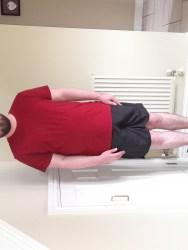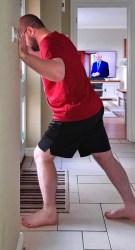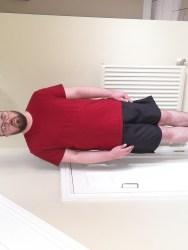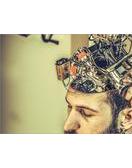Neuro physiotherapy
Around August 2015, I noticed my balance was starting to deteriorate. Since then, it has gradually gotten worse, and at times my legs become so stiff that I struggle to walk. I decided to invest in a wheelchair as I’m unable to determine how long I can stay on my feet. My legs can sometimes violently shake, which causes me to fall over. Now that some of my other neurological issues have stabilised, I thought it would be an excellent time to work on my mobility.
I moved to a new house just over a year ago but had no idea that there was a neurorehabilitation center a few streets up. My local politician tweeted about the paracycling group at the neurorehabilitation centre, which is what brought it to my attention. After having a look at the website which shows they deal with neurological conditions such as Parkinson’s and MS (which have similar symptoms to Superficial Siderosis), I thought it would be right up my street (almost literally).
Initial Assessment
Upon arriving, the neurorehabilitation center carried out the usual Covid-19 checks were; temperature taken, wash hands, mask on and sign into the building. My mom attended with me to help me communicate, as lip reading is the main form of communication I use and is impossible to do when someone is wearing a mask. It was also a good time to test my speech to text app, which I found out is an invaluable tool for a deaf person in the current covid-19 climate.
The doctor first asked me about my mobility issues, to which I advised of the shaking, stiffness in my legs and inability to walk distances. She observed my walking and then examined my legs. The doctor carried out various balance tests to help get a better understanding of my needs. She found I had some spasticity and weakness in my calves, and suggested I mention it to my neurologist in case he could prescribe antispasmodic medication which may help. The doctor also told me I had some weakness in my trunk from where I had adapted to my condition to try and maintain my balance.
Due to my deafness, I found it hard to take everything in so requested a write up of my issues from the doctor. The assessment was beneficial, and it gave me a much better understanding of the problems that I have with my mobility.
Getting Down to Business
The following week I had my first rehabilitation session and had no idea what to expect. Firstly, the doctor examined my walking. She guided me as I was walking forwards, sidestepping and then walking backwards. I found walking backwards exceedingly difficult and was more nervous than I was going to walk into something even though the doctor was walking with me to make sure I did not fall over.
The next exercise was standing on a platform going from heel to toe, in which I could feel my calves stretching. The idea behind this exercise was to work the muscles in my calves as the doctor thought they were stiff and staying contracted, which could have also been causing the shaking sensation in my lower legs. It was a subtle reminder of the weakness in my legs caused by my body trying to counteract the dizziness balance issues brought on by the Superficial Siderosis. The doctor advised me that my peripheral nervous system was not responding as it should be.
I moved to the next activity, which was standing on a platform and looking up and down, then left to right. My head began to get quite dizzy when turning it, so I did need to hold onto the handrails on a few occasions but could feel myself getting used to it. The idea behind this was to train my brain so it could get used to moving my head as I tend to keep my head and neck stiff. The stiffness of both my body and my head I can probably say is due to a combination of the superficial siderosis and the multiple brain operations that I had undergone. Sometimes when I move my head around, I get a zapping sensation at the back of my head, which I can only liken to a static shock. The sensation is not painful, it is just uncomfortable and is another reason I subconsciously keep my head still and limit my movement.
The final thing the doctor showed me was how to practice balancing with my eyes closed. Standing in the corner of the room (so if I fell there would be a wall either side of me to support me), I closed my eyes for 30 seconds, starting with my feet apart. This exercise was carried out three times, lasting 30 seconds and bringing my feet closer together each time until they were touching on the third set. This balance exercise got slightly more difficult the closer together my feet were, and I could feel myself starting to sway slightly, but managed to stay upright. After doing this exercise whilst stood on the floor, I carried it out again whilst standing on a foam mat, which was much harder, and took a lot more concentration to remain steady.
Homework
It’s not just about going to the physiotherapy sessions with the doctor, as a lot of work also needs to be done at home to keep the consistency up and to get the brain used to the exercises. Following the session with the doctor, I was given a few of the exercises to practice at home; calf stretches, balancing with my eyes closed in the corner and walking looking up, down, left and right.
These sessions have shown me how invaluable it is to get some guidance on what exercises I need to do to help my mobility. Each person is unique in the way they adapt to their condition, so before attempting any physio exercises, speak to your doctor or a trained physiotherapist.




